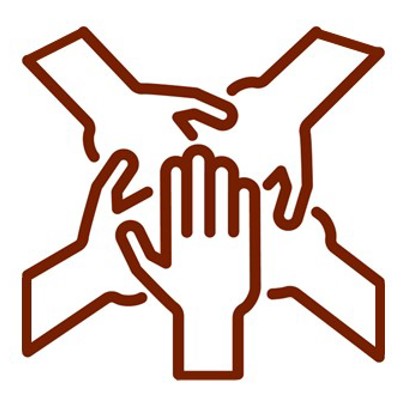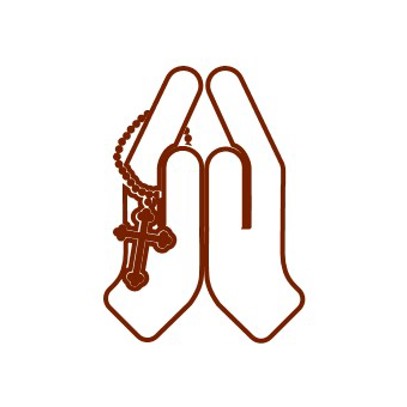Human Dignity
Upper Primary
How can I uphold human dignity?

Laxmi using a water tap that she advocated to have installed as a member of the Child Club at her old school in Jajarkot district, western Nepal. Photo: Richard Wainwright/Caritas Australia
Inquiry Question: How can I uphold human dignity?
By the end of this unit, students will have explored the meaning of human dignity, our rights and responsibilities, Church teaching on Human Dignity and how we can all take actions to uphold the dignity of others.
Before you start:
- Watch the Catholic Social Teaching (CST) film, ‘Human Dignity’, for your own background and familiarise yourself with the Human Dignity comic.
- Download the various resources referenced at the bottom of this page (worksheets, slides etc.) Print student handouts and have weblinks ready to go on your computer/interactive whiteboard.
- Read/watch the stories and videos linked in this learning sequence to determine if they are appropriate for your class.
- Locate Scripture passages and copies of Church texts (hyperlinked within the learning sequence below).
- Familiarise and decide on the use of online or app technologies such as the Human Rights interactive activities.
See-Judge-Act-Pray Process
This learning sequence has been created using the ‘See, Judge and Act’ model. This reflection–action process was first used by a Belgian Catholic priest, Joseph Cardijn (who later became a Cardinal) with Young Christian workers prior to the first World War. This approach was also recommended in the 1961 encyclical letter written by Pope John XXIII called Mater et Magistra (Mother and Teacher).
Definition
-
a belief that every person is made in the image of God and is intrinsically valuable and worthy of respect, simply because they are human
-
a quality of being human, independent of ethnicity, creed, gender, sexuality, age, or ability
-
a reality challenged by poverty, hunger, oppression and injustice.
Student-friendly explanation of Human Dignity:
- Every person is made in the image of God.
- We are all valuable and worthy of respect and fairness because we are all human.
Learning intention
We are learning:
- the meaning of the term ‘Human Dignity’
- about our human rights and responsibilities
- what the Church teachers us about Human Dignity
- what the SDGs are and understand what actions we can take to uphold Human Dignity.

SEE
Explain that to uphold human dignity, we need to understand what our human rights and responsibilities are. Complete the interactive lesson 1 quiz to engage students in the discussion.
Note: Stop after the Quiz but keep your website tab open. The activity that follows on rights and responsibilities will be completed further along in this learning sequence.
Source: Australian Human Rights Commission
NOTE: additional activity instructions, questions and answers can be found in the source link.
Read the Human Dignity comic. Different students could read each panel aloud.
Return to focus on panels 1 and 2 of the Comic. Discuss what does it mean to be made in the image of something?
Students write a reflection using the student handout, “If I am made in the image of God- what should I reflect? Do I always reflect this? Why/why not? What can we reflect?” You may like to create a list of qualities as a class first.
Defining Human Dignity
In groups, students discuss the meaning of human dignity with reference to a range of modified Encyclical quotes provided in the Human Dignity student handout. Provide each group with sticky notes or small sheets of paper where they write key words related to human dignity, based on their discussion and quotes.
Students share their key words.
As a class write and display a class definition of ‘Human Dignity’. Students can add the post-its/decorated word sheets of paper to the class definition.
You may like to add/include definitions written above.
Complete the online interactive activity ‘Rights and Responsibilities’. This activity involves students rephrasing human rights and personal responsibilities. Students could complete this independently or in pairs online, or you could ask students to record their answers in their workbook for a record of assessment. After students have provided their ideas for each right shown on the interactive slides, click on the button to reveal a related responsibility.
Source: Australian Human Rights Commission
NOTE: Additional activity instructions, questions and answers can be found in the source link.
Using ‘Two Stray, One Stay’ strategy, discuss are these rights easy to uphold? Do children in the class have these rights? Have you heard or seen that some children around the world do not have these rights? How does extreme poverty, inequality, and climate change impact upon human rights and therefore the ability to live a life worthy of their dignity?
Explain to the students, that to create a more humane world, the United Nations have established Sustainable Development Goals (SDGs), that they hope everyone will support so that we all are able to improve the health of the world by caring for other people and the natural environment by 2030.
Watch this video that introduces the SDG.
As a class, identify which SDG actions are relevant to Human Dignity. Discuss different actions that people can take to support the SDGs. If time permits, students might be able to explore the SDGs website for ideas. Resource to assist in ideas: The Lazy Person's Guide to Saving the World - United Nations Sustainable Development.

JUDGE
Revisit panel 4 of the Human Dignity comic.
Discuss the verse ‘love your neighbour as yourself’ (Mark 12:31). Explain that we all deserve to be loved and respected, but we need to show this love and respect to others as well.
Focus on panel 5 of the Human Dignity comic. Discuss what else does Jesus teach us about how we should treat people? What Bible stories come to mind?
Read the ‘Parable of the Prodigal Son’ (Luke 15:11–32) and/or ‘Parable of the Good Samaritan’ (Luke 19: 25-37). Using the Inside/Outside strategy, students identify examples of poverty, oppression, injustice, or hunger in the parables. Students then identify where they see examples of loving your neighbour as yourself in the parables. Is it easy for the characters to love their neighbour? What makes it difficult for the characters in the parables to love their neighbour? What does Jesus teach us about human dignity through these parables?
Read Memory’s case study. Complete the case study investigation worksheet provided in the Human Dignity student handout.
Discuss where people are not loving their neighbour as themselves or treating each other with dignity at school, in Australia and around the world. This may raise issues such as rights of First Nations Peoples, the Black Lives Matter movement, poverty, women’s rights, homelessness etc. Explore one of these issues in relation to Human Dignity.
Students complete the Human Dignity Issue worksheet provided in the student handout.
Review the encyclical quotes explored earlier. Consider the Scripture story, Memory’s story and contemporary examples to assist in choosing one encyclical quote that best represents how we can uphold the dignity of others.
Create an inspirational poster with their selected quote. Encourage students to be creative in their design and to include the encyclical reference.

Act
Consolidate the link between our actions and upholding dignity by reading/ focusing on panel 6 of the Human Dignity comic that describes actions we can take. Discuss any questions or thoughts students have in response to the comic at this point.
How to bring about change? In groups of 3, students record ideas on the ‘How To Bring About Change?’ worksheet exploring the following 3 areas.
- Raise Awareness – advocate to change attitudes and behaviours of others, and inform the community
- Lobby and persuade – advocate to change policies through local government representatives
- Work with others – support charities like Caritas Australia
Encourage students to utilise their learning to come up with ideas. Share students’ ideas with the class. The class might like to take action on one or more of their ideas. Our Student Action Planner is available for you to utilise.
Adapted from source: Amnesty International

Pray
Prayer ideas:
- Students reflect on the Caritas Australia story they read and /or what they have learnt about human right and human dignity and write a prayer in response, completing this sentence: “We pray for people who … We ask that …” Create a prayer space and spend time in prayer together where students share their prayer. You may like to finish by listening to the song “All the Same” by Vineyard Worship for some quiet reflection time. Display or share students’ prayers in a book or digital format.
- Gather in a prayer space and use the Sustainable Development Goal Manifesto to pray.












